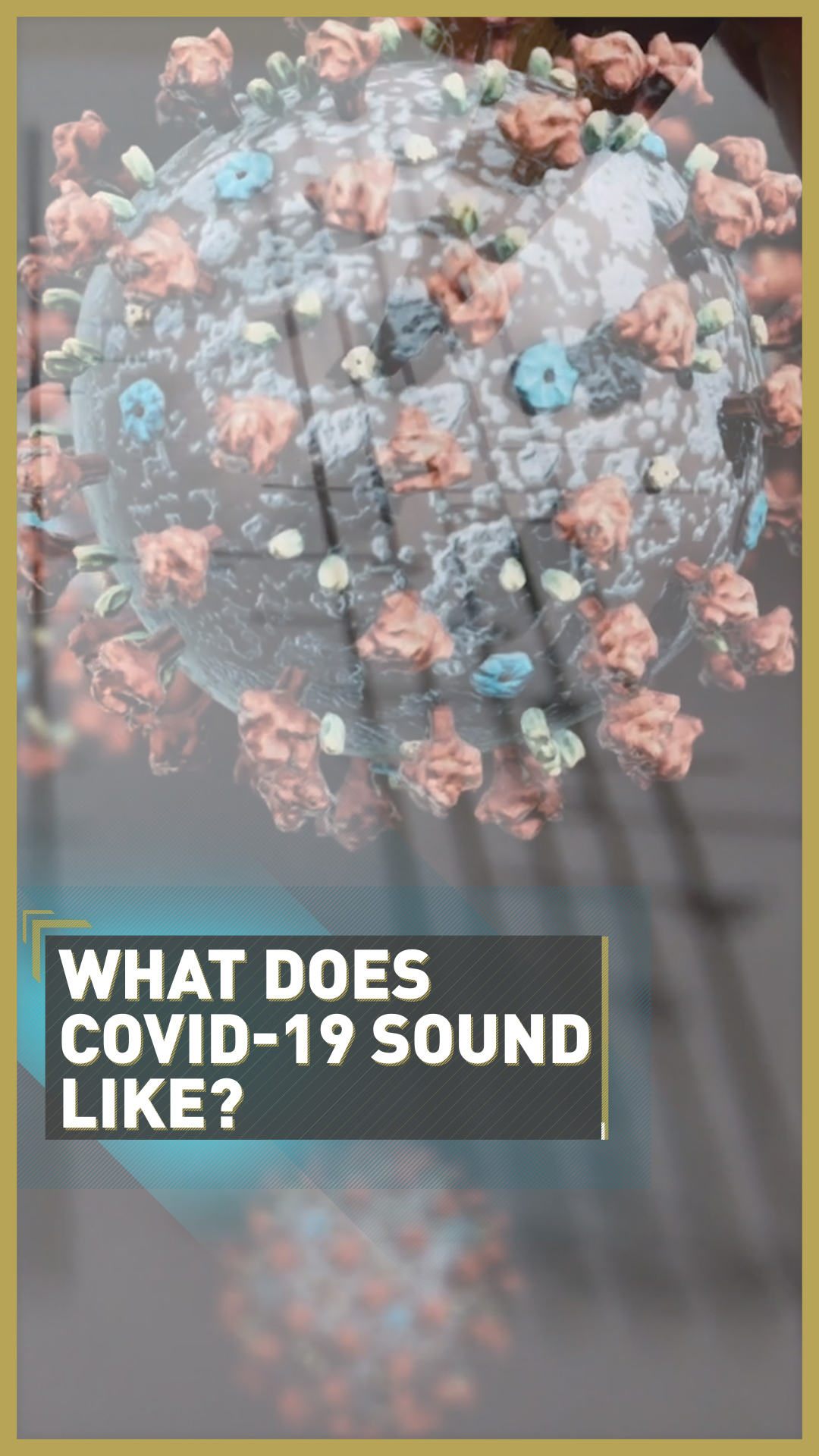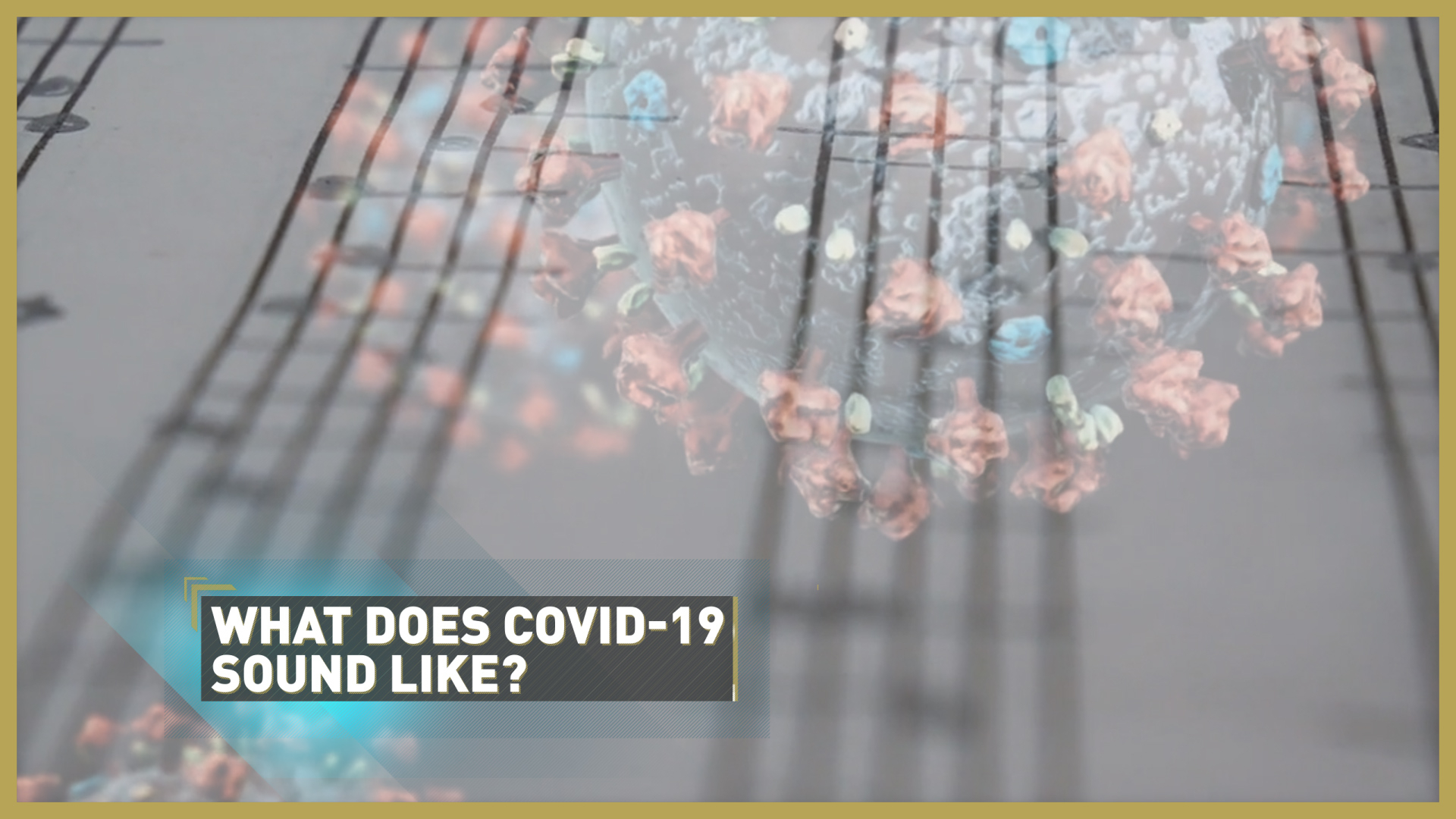01:42

Millions of people worldwide are unlucky enough to have first-hand experience of what COVID-19 feels like. Now, thanks to a series of images taken of the coronavirus using electron microscopes, we also have a good idea of what it looks like.
One thing we didn't know about the virus is what it sounds like. Until now.
Musician and engineer Markus Buehler from the Massachusetts Institute of Technology has set the pathogen to song. Buehler has taken the crown-like protein spikes from the virus's surface, which loop and fold over one another, and assigned each one a musical equivalent via artificial intelligence.
The resulting score of nearly two hours is a relaxing piece of electronica that wouldn't sound out of place on an arthouse film soundtrack.
"The ear can process so much more complex structure in real time than the eye, even with an electron microscope," Buehler tells CGTN. "By listening to this virus, the human brain can understand so much more about this pathogen."
In the same way that composers put together notes of different pitch, tone, melody and rhythm on various instruments to make music, the coronavirus stitches together amino acids to make proteins.
"Every atom is continuously vibrating and what we've done is compute these vibrations and make them audible," he says. "We're creating musical compositions which reflect the structure of a protein in something you can hear."
00:59

How does it sound?
Each amino acid vibrates with characteristic frequencies and professor Buehler then transfers these into frequencies humans can hear.
"COVID-19 is very large and is folded onto itself many times, so the resulting music is a web of melodies in variation with each other, which is essentially counterpoint music. Bach's music is a great example of this," he says.
"The piece is two hours long because the protein is so complex, like a spider's web, and creates a really interesting pattern. There are millions and millions of notes in this piece created by the virus's structure. We did something similar with a type of snail's venom, which has only 20 or 30 amino acids, as opposed to tens of thousands for COVID-19, and that lasts for less than two minutes. That's how complex this virus is."
How useful can this be?
There's more to Buehler's composition than just a bit of nerdy fun. Understanding the "vibrational structure" of COVID-19's complex proteins could be crucial for designing drugs to combat the virus, which locks onto human cells via its crowns, or coronas, to infect its host.
"From listening to the protein, we can learn to speak its language and how it binds itself to humans and causes infection," says Buehler. "By looking at these sequences, we're hoping to find an antibody which binds more strongly to the virus's coronas than the human cell. Effectively, we'd be putting Band-Aids on the surface of the proteins.
"We didn't do this just to enjoy the music, we did it to understand the virus, learn its language and help fight it. It's like learning a foreign language, we know the letters, but don't quite know the order yet."
So, why not put your Bach or German electro pioneers Kraftwerk to one side and listen to a bit of COVID-19? You might be among the first to hear the very beginnings of a coronavirus antibody – and an exit strategy from the pandemic which has swept the world.
Sign up here to get the COVID-19 Europe bulletin sent directly to your inbox